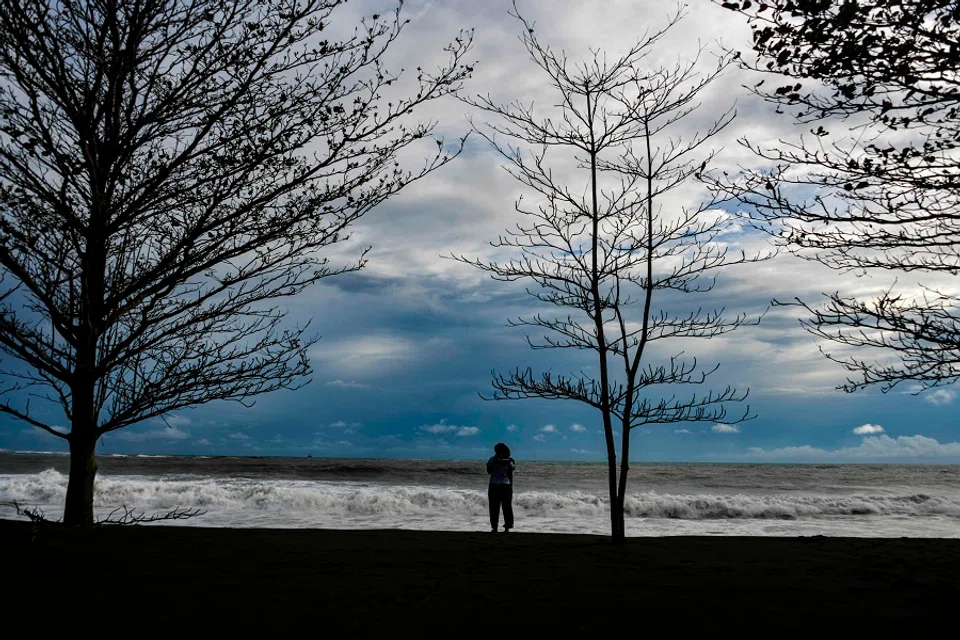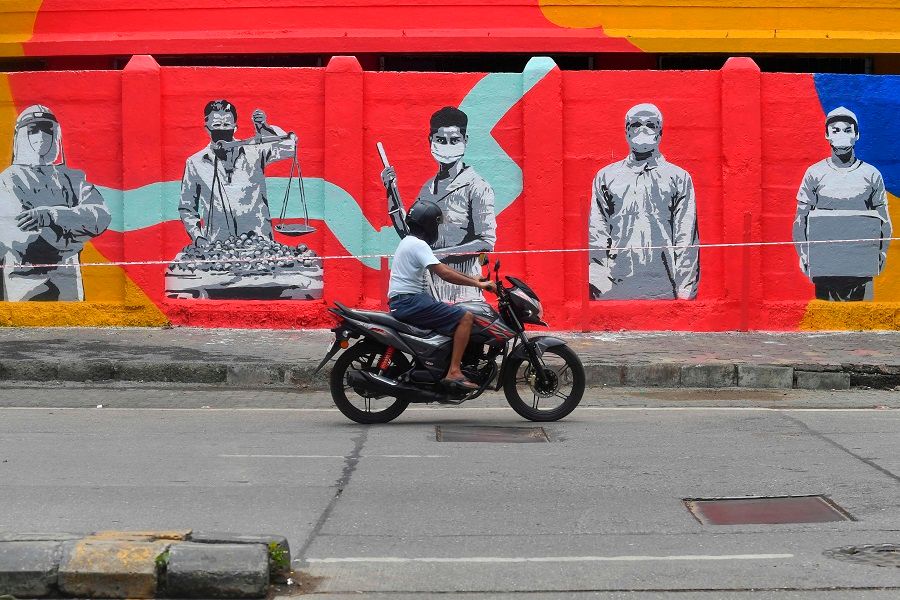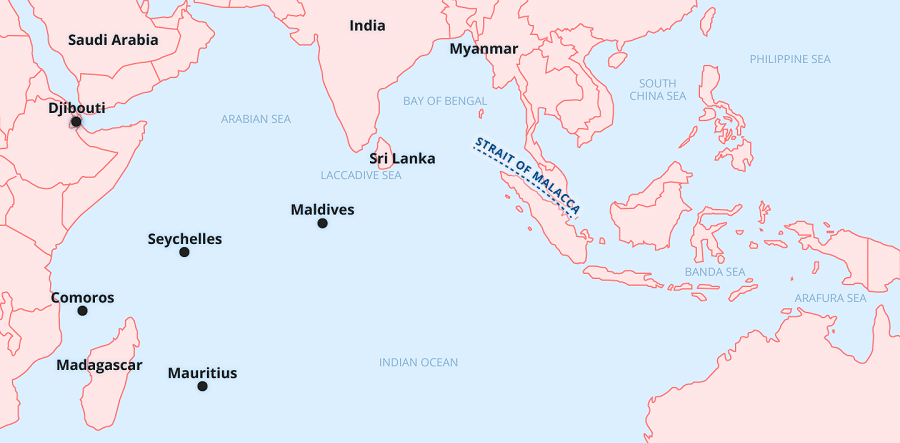India in the Indo-Pacific: Reining in China in the new theatre of great power rivalry

In the words of American writer Robert Kaplan in his 2009 article in Foreign Affairs magazine, the Indian Ocean forms the "centre stage for the challenges of the twenty-first century". This statement is even more apt, given the prevalence of the Indo-Pacific as a political and strategic construct, and the expansion of the Asia-Pacific regional security architecture into the Indian Ocean.
Indian Ocean under the spotlight
Three major factors mark the increasing importance of the Indian Ocean. First, as noted by the Indian Ocean Rim Association (IORA), the Indian Ocean "commands control of major sea-lanes carrying half of the world's container ships, one-third of the world's bulk cargo traffic and two-thirds of the world's oil shipments". It also connects to maritime chokepoints such as the Strait of Hormuz, Bab el-Mandeb Strait, Strait of Malacca, Lombok Strait and the Sunda Strait. Thus, countries dependent on the smooth flow of trade and energy have a great interest in safeguarding the sea lanes of communication in the Indian Ocean.
The strategic importance of the Indian Ocean leads to the second point, which is the China threat. China is the world's top importer of crude oil. As such, the safe passage of its oil supply from OPEC countries such as Saudi Arabia to China is vital. According to a Chinese state media report, some 80% of Chinese crude oil imports and some LNG imports pass through the Malacca Strait. In what became known as the "Malacca Dilemma", former President Hu Jintao spoke in 2003 about the challenges China faced from certain powers trying to control the Strait. This security imperative has fostered incremental changes in China's strategic outlook towards the Indian Ocean and its moves to diversify its transport routes.
While different countries have different ideas about the Indo-Pacific, there is a general sense that the rise of this concept is targeted at China to some extent.

Third, the rise of regional stakeholders calling for a "free and open Indo-Pacific". Aside from just "Asia-Pacific", the term "Indo-Pacific" has gained cache in international discussions. While different countries have different ideas about the Indo-Pacific, there is a general sense that the rise of this concept is targeted at China to some extent. The seeds of such a perception may have been sown when Japanese Prime Minister Shinzo Abe made a "confluence of the two seas" speech in the Indian parliament in 2007 where he said: "The Pacific and Indian Oceans are now bringing about a dynamic coupling as seas of freedom and of prosperity. A 'broader Asia' that broke away geographical boundaries is now beginning to take on a distinct form."
Imagined community of the Indo-Pacific buttressed by the Quad
In recent years, countries have gone on to articulate their views on the Indo-Pacific in documents such as the US's "A Free and Open Indo-Pacific: Advancing a Shared Vision" and ASEAN's "ASEAN Outlook on the Indo-Pacific". The Quadrilateral Security Dialogue, or Quad, involving the US, Australia, India and Japan, has also been revived.
The Quad had met for the first time in 2007 but quickly lost steam due to lack of resolve and leadership changes. When Abe came back to power in 2012, in a Project Syndicate opinion piece titled "Asia's Democratic Security Diamond", he expressed that "peace, stability and freedom of navigation in the Pacific Ocean are inseparable from peace, stability, and freedom of navigation in the Indian Ocean" and that he envisaged a strategy "whereby Australia, India, Japan, and the US state of Hawaii form a diamond to safeguard the maritime commons stretching from the Indian Ocean region to the western Pacific". The Quad was eventually revived in 2017 with the four countries meeting on the sidelines of the ASEAN and East Asia Summit meetings in Manila.
Unlike other maritime quarters, in the case of the Indian Ocean, China's great power aspirations fall short as it is not a primary player in the region compared to India, which has a dominant position in the Indian Ocean by virtue of its geographic location.
China ramping up efforts to protect interests in Indian Ocean region
Against this backdrop, what significantly adds to Beijing's dilemma are factors such as increasing piracy, the Indian Ocean being India's backyard, and mostly, US military predominance in the region and the increasing realignment of strategic focus by countries such as Japan and Australia. This puts China in a challenging position in its quest to safeguard maritime security and regional stability. Unlike other maritime quarters, in the case of the Indian Ocean, China's great power aspirations fall short as it is not a primary player in the region compared to India, which has a dominant position in the Indian Ocean by virtue of its geographic location.
To build its foothold in the Indian Ocean region (IOR), China has adopted several proactive measures. First, deploying the People's Liberation Army Navy (PLAN) in anti-piracy operations in the western Indian Ocean, the docking of PLAN ships and submarines in the IOR, and the conducting of live fire drills in the IOR. These actions reflect China's intention to safeguard its strategic interests in the Indian Ocean.

Second, China has established its first overseas permanent naval military base in Djibouti, claiming it to be a support base meant for supply missions for implementing China's escorting, peacekeeping, and humanitarian aid missions in Africa and West Asia.
Third, the grand "21st Century Maritime Silk Road", part of the Belt and Road Initiative (BRI), under which China has a hand in developing ports such as Gwadar in Pakistan, Hambantota in Sri Lanka, and Kyaukpyu in Myanmar, boosting China's maritime connectivity to the IOR and essentially filling the void of its "offshore" status. This is significantly changing the status quo and most importantly, shaping the new Indo-Pacific security architecture.
The non-traditional health emergency has boosted the strategic alignment showcased in the active competition and collaboration of regional and external powers as they sought to expand their influence and counter the threats from others. This is exemplified by the active role of the Quad.

Quad quandaries after Covid-19
What is noteworthy is that the long-held speculation over the Indo-Pacific being a largely dormant construct has gained a significant boost under the Covid-19 pandemic. The non-traditional health emergency has boosted the strategic alignment showcased in the active competition and collaboration of regional and external powers as they sought to expand their influence and counter the threats from others. This is exemplified by the active role of the Quad.
After the dialogue among the Quad was formally resumed among senior officials in 2017, it met for the first time in 2019 at the foreign minister-level on the sidelines of the UN General Assembly meeting in New York. However, Covid-19 acted as a catalyst in bringing the Quad to greater prominence as witnessed in the inclusion of New Zealand, South Korea and Vietnam in a "Quad-Plus video conference" in March to discuss joint efforts against Covid-19. The plan was to keep the meetings on a weekly schedule. However, the verdict is still not out on the objectives and durability of Quad-Plus' going forward. These developments, compounded by escalating border tensions with China, will further boost India's resolve to seek a larger role in furthering the construct of the Indo-Pacific and to strengthen its leading role in its own strategic backyard of the IOR.
The ship (from India) visited the Maldives, Mauritius, Madagascar, Comoros and Seychelles, delivering Covid-19-related supplies such as food and medicine.
India poised to play a bigger role
India's international efforts in helping to fight the pandemic have been noteworthy. India championed the call for a "global fight" against the pandemic, inter alia, by undertaking virtual diplomacy through the South Asian Association for Regional Cooperation (SAARC) and the Group of Twenty (G20) and pledging US$15 million to the international vaccine alliance GAVI. India also lifted a ban on drugs such as hydroxychloroquine (HCQ) and paracetamol and facilitated their supply overseas. It also provided medical assistance to over 90 countries at an estimated cost of 1.1-1.2 billion rupees, and deployed the Indian Armed forces under India's various missions abroad.
For instance, the Indian Ministry of External Affairs said that India's deployment of INS Kesari under Mission Sagar in a 55-day voyage from 10 May-28 June through the Indian Ocean was in line with India's "time-tested role as the first responder in the region". The ship visited the Maldives, Mauritius, Madagascar, Comoros and Seychelles, delivering Covid-19-related supplies such as food and medicine. In the case of Mauritius and Comoros, medical assistance teams were also deployed.
India's strategic weight in the Indo-Pacific is also enhanced by the strengthened Indo-US defence ties...

India is also levelling up its position as a key player in the global supply chain as countries are shifting production away from China. To facilitate, India has already allocated land parcels in support of these anticipated investments. The Covid-19 crisis gives India a chance to show that it can be a first responder to crises not just in the region but also globally.
India's strategic weight in the Indo-Pacific is also enhanced by the strengthened Indo-US defence ties under: the Logistics Exchange Memorandum of Agreement (LEMOA) and Communications Compatibility and Security Agreement (COMCASA); increased US-India defence trade from almost zero in 2008 to US$20 billion 2020, according to a US Department of State statement; and increased military exercises between India and US, such as Tiger Triumph in 2019, the first joint tri-service exercise.
Besides, in 2020, India's ties with Australia upgraded to that of a "Comprehensive Strategic Partnership", under which a key arrangement under defence cooperation includes increasing "military inter-operability through defence exercises through their Arrangement concerning Mutual Logistics Support (MLSA)".
India has also shown an interest in the Blue Dot Network spearheaded by the US, which is an alternative to China's BRI that focuses on "building and financing quality infrastructure projects".
With the circumstances of Covid-19 pushing countries towards a further realignment of power in the Indo-Pacific, the world is drifting further away from the old Asia-Pacific security architecture. Thinking and talking in terms of the Indo-Pacific will all the more be seen as the new normal of global politics. This portends two things in the foreseeable future - China's greater military activism to claim its space while India exerts a stronger role to be a strategic weight in the Indo-Pacific. Now more than ever, the Indo-Pacific is very much the reality of 21st-century great power rivalry.
Related: Arm wrestling in silence: China-US military scorecard under the shadow of the pandemic | Battling atheist China: US highlights Xinjiang issue and religious freedom in Indo-Pacific region | China in the Gulf: India overmatched but undaunted | India-China relations: Compromises and conflicts amid Covid-19
